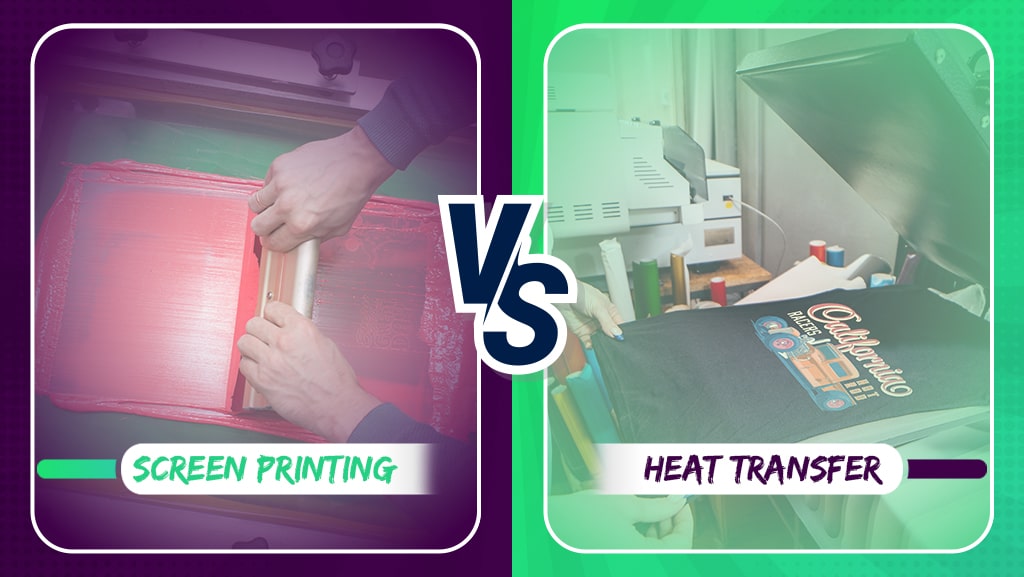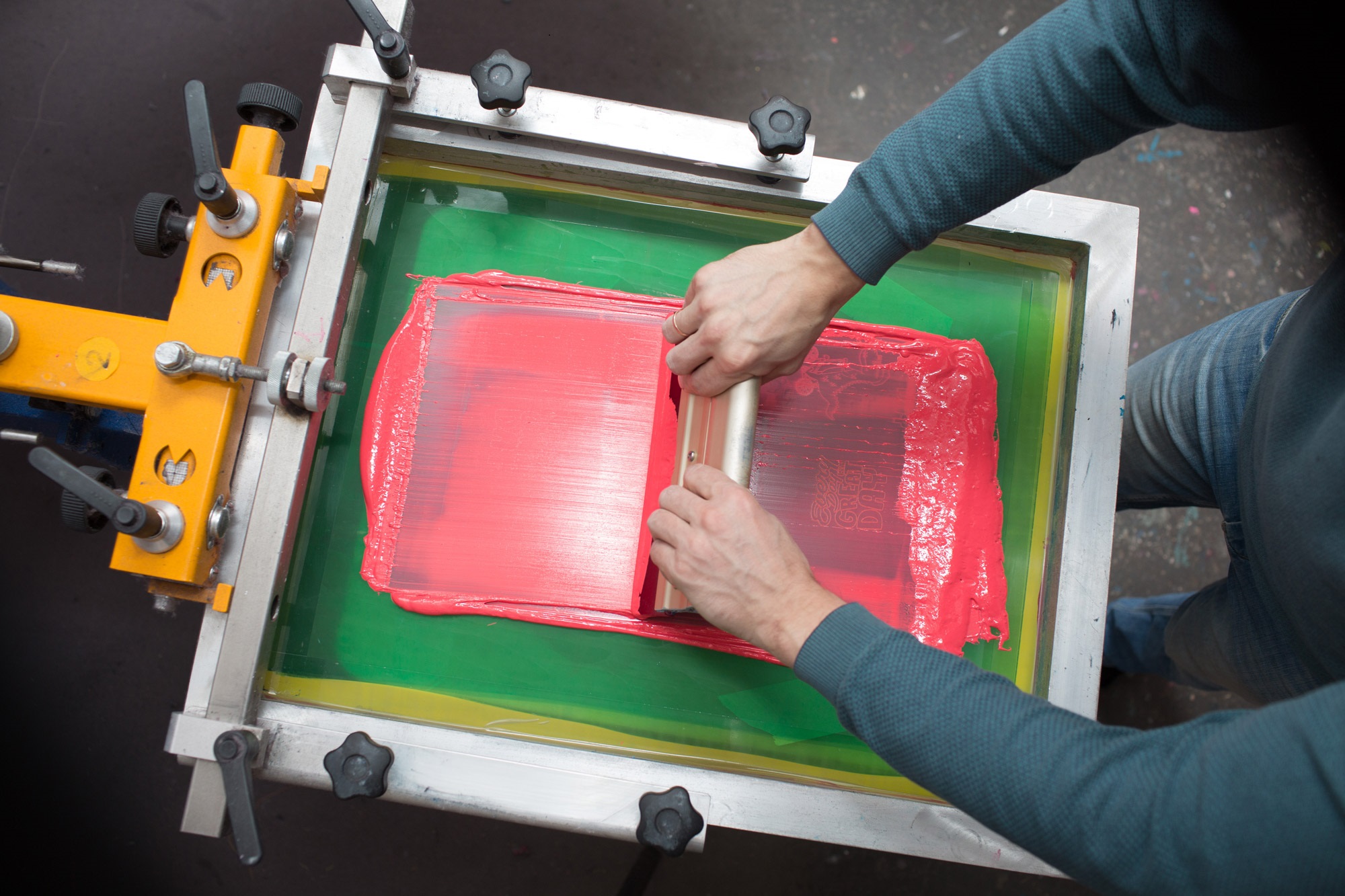The Definitive Guide for Tx Tees
The Definitive Guide for Tx Tees
Blog Article
Tx Tees Can Be Fun For Anyone
Table of ContentsTx Tees - An OverviewThe Greatest Guide To Tx TeesAbout Tx TeesThe 2-Minute Rule for Tx Tees9 Easy Facts About Tx Tees ShownNot known Details About Tx Tees The smart Trick of Tx Tees That Nobody is Talking About
Add up various other prices, like the number of utilities it takes to run the store and the expense of ink and solution per style. Take the print listed below.The solution needs to only be a few cents considering that you 'd just require to coat one screen for this task. Just how much should you bill per t shirt to make a revenue? Normally, printers attempt to make up to 45% earnings on a print job. Right here's a table to assist you determine that: total expense per product percent of wanted earnings as a decimal (instance:.25 or.45) earnings made per item per task Currently allowed's talk about the productivity of DTF.

With DTF, you can publish a handful of shirts, or simply one. Both screen printing and DTF have their particular niches in the world.
All about Tx Tees
The very best way to understand? Ask about and see what print shops like yours are doing. custom cap printing. Attempt both out and see which you like far better
When you're picking what type of printing method to use for printing your artwork layouts on your garments, it's important that you understand the distinctions in between these two techniques so you can take full advantage of outcomes while decreasing prices. Display printing is one of the most commonly used technique for printing designs on textiles.
DTG printing is also called spot or direct to garment printing since it prints only what is needed rather than making a screen as screen printers do. https://txtees02.carrd.co/. Screen printing functions by screen filler squeegee display printing ink screen mesh display, then transferring the photo to garment utilizing heat and/or stress
The DTG printer uses special dye-sublimation inks that are used right into a pre-designed photo by a digital printing system. The inks become part of the textile, enabling for vivid colors and extraordinary information. It's also called spot or straight to garment printing because it prints just what is needed rather than making a display as screen printers do.
Our Tx Tees Statements
It's much quicker - you can publish a fullcolor photo in mins, as opposed to hours for display printing. Second, there's no set up time or costs included - you can publish any kind of style you such as, without needing to develop a display initially. Third, there's no waste - because screen printers display print one layout at once, they need to evaluate each shade individually.
The paper is extremely costly and can only be made use of as soon as. Once it's published on, it needs to be disposed of. - The preliminary purchase price is less than the upfront financial investment of DTG printers- You can publish multi-color layouts one display each time instead of having to publish each shade independently like DTG printing.

How Tx Tees can Save You Time, Stress, and Money.
Instead of utilizing display mesh as display printers do, color sublimation printers use laser innovation to move your photos onto garments or paper. A heat process transfers the color from its solid-state straight into the gas stage which subsequently fuses it onto fabric substrates when they are quickly warmed to high temperature levels under high pressure.
Sublimation printing is environment-friendly. It makes use of much less water than screenprinting, and because it doesn't involve the use of unsafe solvents, it's secure for all types of apparel. The dye sublimation inks are also odor free when treated, unlike display printers that utilize dangerous chemicals throughout the screen printing procedure that leave behind an undesirable smell.
They likewise conserve money on expensive devices like direct exposure systems given that color sublimation printers do not need a UV direct exposure system or a flash remedy oven that is normally made use of in display printing (screen printer). What is direct to garment printing (DTG Printing)? DTG printing is a digital screenprinting process that publishes straight onto material utilizing specialized inkjet printers
An Unbiased View of Tx Tees
DTG printing supplies lots of benefits over typical screenprinting, consisting of the ability to publish photographic top quality pictures, greater shade vibrancy, and the capability to publish styles on darker materials. DTG printers function by heating up the fabric ink up until it becomes a gas. The gas after that permeates the textile, bonding with the fibers to produce a permanent print.

Screen printers merely prepare their display after that start printing until they run out of item or ink.- There is a vast array of skilled screen printers all over the globe, which can be practical for novices. - It's a slower process - display printers typically have to wait for the ink to completely dry prior to they can print the following shade- Screen printers require hand-operated labor, so there's a greater discovering curve and it takes longer to generate a high-quality layout- Screen printing isn't as accurate as DTG printing, so you might get some "bleeding" of shades from one part of the photo onto one more if not done effectively.
The smart Trick of Tx Tees That Nobody is Talking About
However, as opposed to using display mesh as screen printers do, dye sublimation printers make use of laser innovation to move your images onto garments or paper. A warmth process moves the color from its solid-state directly right into the gas stage which consequently merges it onto textile substrates when they are quickly warmed to heats under high pressure.
Sublimation printing is environmentally friendly. It utilizes much less water than screenprinting, and because it doesn't entail the use of dangerous solvents, it's safe for all types of clothing. The color sublimation inks are also odor-free when healed, unlike screen printers that utilize dangerous chemicals during the screen printing process that leave an undesirable smell.
They additionally save cash on expensive equipment like exposure systems given that color sublimation printers don't require a UV exposure unit or a flash remedy oven that is typically used in screen printing. What is direct to garment printing (DTG Printing)? DTG printing is a digital screenprinting process that prints directly onto fabric utilizing specialized inkjet printers.
Tx Tees Things To Know Before You Buy
DTG printing provides numerous benefits over traditional screenprinting, consisting of the capacity to print photographic quality photos, higher color vibrancy, and the ability to publish styles on darker materials. DTG printers work by warming the fabric ink until it develops into a gas. The gas then permeates the textile, bonding with the fibers to produce a permanent print.
Report this page